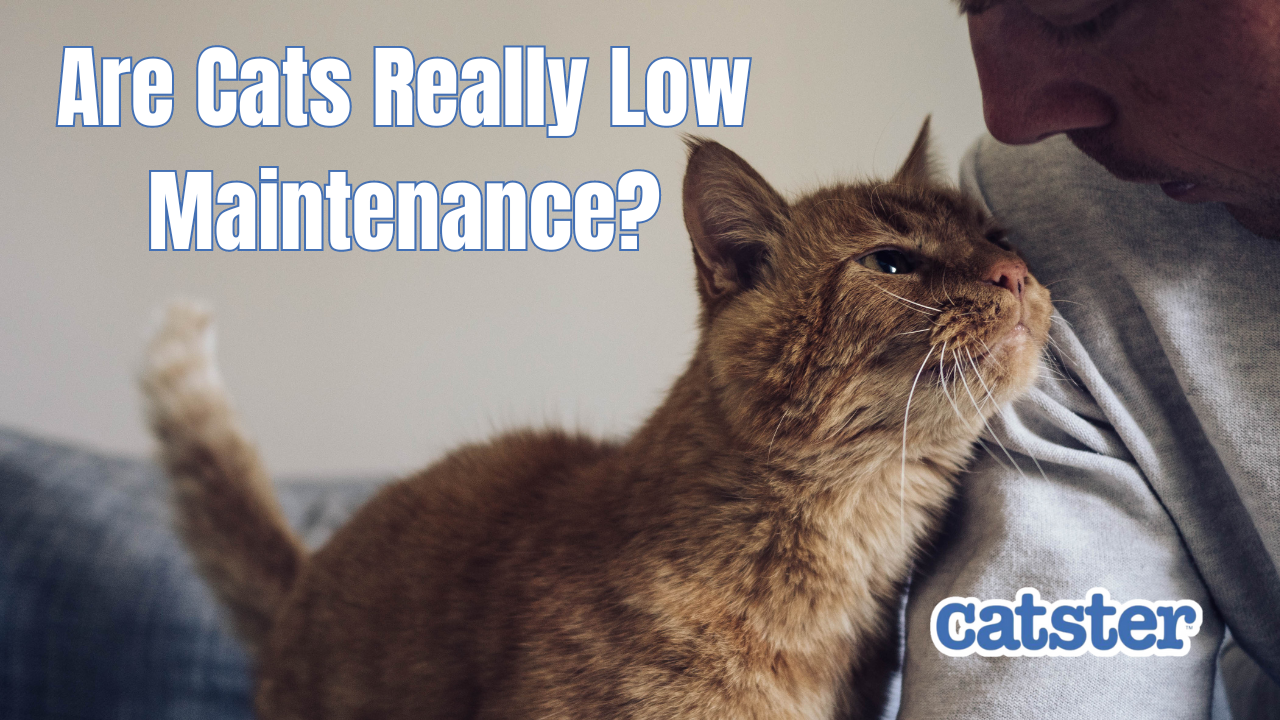Are Cats Really Low Maintenance Pets?

When compared to most dogs, cats are often touted as low-maintenance pets. After all, they don’t necessarily need to go for walks and don’t need the almost constant attention that some dogs require. Plus, they eat comparatively smaller amounts of food.
While cats may be easier to care for than dogs in some ways, they are certainly not “low maintenance” and arguably take just as much care and attention as dogs—albeit in their own unique ways.
Here’s why cats are not considered low-maintenance pets. Catster.com in-house veterinarian Dr. Karyn Kanowski, BVSc MRCVS, explains, “The idea of cats being low maintenance is certainly one that applies if you compare them to the more hands-on daily requirements of a dog. Speaking generally, dogs need regular daily input from their human caretakers.”
Dr. Kanowski continues, “However, when speaking to their emotional and psychological needs, the opposite could be inferred. The independent nature of cats means that, although they bond very closely to their humans, they are more likely to detach—either physically by escaping the home or by distancing themselves within it—if they feel stressed or discontent. While dogs are more forgiving and eager to please, it is not uncommon to feel that you need to really earn the affection and trust of a cat; their pride and sensibilities are easily offended.”
While cats don’t have the intensive exercise needs of most dogs, they have their own needs that can, for the most part, be almost just as demanding. Firstly, cats thrive on routine and need a regular feeding schedule to keep them feeling secure and safe, and most vets recommend splitting their meals into two per day. Cats are also obligate carnivores, requiring a somewhat more specialized diet than dogs.
Cats also, for the most part, need daily grooming. This is especially true of long and medium-coated breeds. Many people think that since cats are such fastidious groomers, they’ll take care of their own coats just fine, but for long-haired varieties, this couldn’t be further from the truth. Some cats may even need their nails trimmed fairly regularly.
Most experts recommend that cats spend most—if not all—of their time indoors, and this means they need toys, climbing trees, and scratching posts to keep them properly stimulated and exercised. Letting a cat spend time outdoors can lead to diseases, injury, and a threat to local native wildlife.
Of course, cats also need a litter box, especially indoor cats. This means that owners need to scoop litter daily and add to or change the litter in the litter box often. This is both time-consuming and expensive and something that most dog owners do not need to deal with.
Lastly, cats typically live much longer than dogs, with an average of 15–20 years, 5–10 years longer than most dogs, especially the larger dog breeds. With this longer lifespan comes more responsibility, more food and entertainment costs, and with an aging feline, added vet and care expenses.
Dr. Kanowski reiterates, “In many ways, cats could be thought of as lower maintenance pets when compared to dogs, but this is more a reflection on their independence rather than their need for care, attention, and dedication from their humans.”






